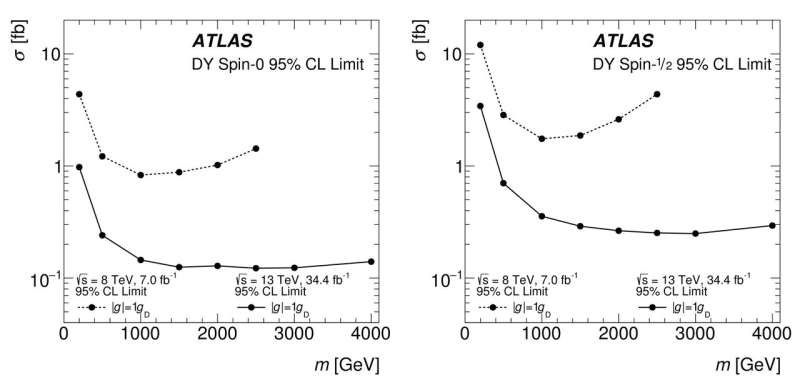New result in hunt for mysterious magnetic monopoles

Cutting a magnet in half yields two magnets, each with its own north and south pole. This apparent absence of an isolated magnetic pole, or "," has puzzled physicists for more than a century. It would seem perfectly natural for a magnetic monopole to exist; Maxwell's equations would reflect complete symmetry between electricity and magnetism if particles with magnetic charge were observed. But the mystery remains: While every known particle is either electrically charged or neutral, none have been found to be magnetically charged.
In 1931, Paul Dirac formally proposed a theory for magnetic monopoles, which might be produced in conditions like the ones found at the LHC. Scientists from the ATLAS Collaboration at CERN have designed a specialized technique to search for evidence of such particles. According to Dirac, magnetic monopoles of fundamental magnetic charge (1 gD) ionize matter the same way a high-electric-charge object (HECO) would. Large energy deposits, proportional to the charge squared, would be left behind in the ATLAS detector through which these particles traveled.
Thus, a search for magnetic monopoles with these characteristics goes hand in hand with a search for stable particles of many times (more than 20) the charge of the electron. ATLAS physicists pick out collision events with characteristics expected of HECOs or magnetic monopoles from data collected by ATLAS' tracking detector and calorimeter systems for further analysis. These candidate events are identified by discriminating regions with large and narrow energy depositions in the calorimeter and corresponding traces of high ionization in the transition-radiation tracker.
The from the search for magnetic monopoles and HECOs in 13 TeV proton-proton collisions. Given that no evidence of either magnetic monopoles or HECOs was observed, constraints were established on spin-0 and spin-½ particles assuming the mechanism.
To date, the search is the most sensitive study on magnetic monopoles in the range of 1 to 2 gD magnetic charge, surpassing the results of the dedicated , which nonetheless probes a larger range. The study also improves, by approximately a factor of five, the previous constraints on the direct production of magnetic monopoles with magnetic charge 1 gD (see figure). Moreover, it is the first search to study HECOs with charges greater than 60 times the charge of the electron, thereby exceeding the ranges covered by previous studies by the CMS and ATLAS Collaborations.
ATLAS has once more proven to be a powerful instrument for scientific study. Through its general purpose detecting capabilities, physicists will be able to continue hunting for exotic particles like the magnetic monopole.
More information: Search for magnetic monopoles and stable high-electric-charge objects in 13 TeV proton-proton collisions with the ATLAS detector. arXiv:1905.10130v1 [hep-ex]:
Arttu Rajantie. The search for magnetic monopoles, Â鶹ÒùÔºics Today (2016).
Journal information: Â鶹ÒùÔºics Today
Provided by ATLAS Experiment





















